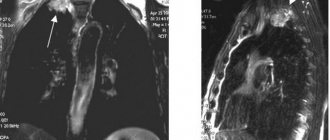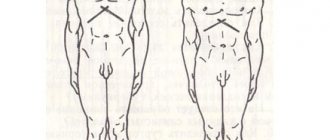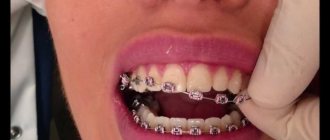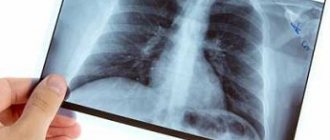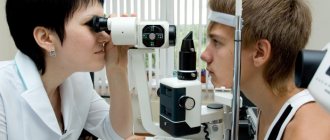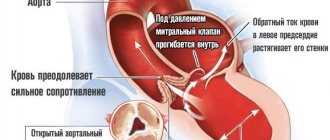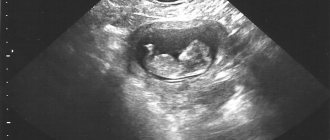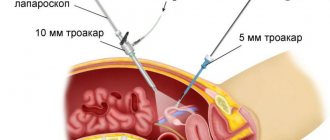Young mothers are faced with the need for diagnostic examinations (X-rays, CT, ultrasound, MRI), which causes them concern and fear of adverse consequences from these procedures.
Magnetic resonance imaging
More often than not, these fears are greatly exaggerated. Modern medicine uses advanced techniques to diagnose diseases in which harmful side effects are kept to a minimum. One such study is magnetic resonance imaging.
The need for this procedure
MRI is considered a fairly safe and effective technique, but is prescribed exclusively by a specialist if there are significant reasons. MRI is also allowed during breastfeeding and is prescribed in the following cases:
- if there are abnormalities in the functioning of the pituitary gland in a nursing mother;
- with increased intracranial pressure;
- You can do this procedure for diseases of the musculoskeletal system;
- in the presence of cerebral vascular pathologies;
- if a woman has or suspects neoplasms in the mammary glands;
- during a course of chemotherapy to monitor results.
Features of combining breastfeeding and MRI
If a nursing mother is scheduled for a magnetic resonance imaging scan of the brain, the procedure will be carried out with the introduction of a contrast agent containing gadolinium salts. This substance necessarily enters the circulating blood, seeps into the mammary glands and penetrates into breast milk. Its use is undesirable for an infant, as it can provoke an allergic reaction, poisoning of the child’s body, or bloating. MRI with a contrast agent during GV is approached with extreme caution.
If the examination is not prescribed in emergency cases, it is better to postpone it until the period when the baby can be transferred to artificial nutrition. If the procedure must be carried out immediately, an allergic reaction test is performed. If the result of an allergy test is negative, a diagnosis is carried out. However, in such a situation, the child should be switched to artificial foods for 2-3 days. During this time, the mother should express breast milk, and only after this period should she resume breastfeeding.
Unlike computed tomography, magnetic resonance imaging does not produce harmful radiation on the female body, so diagnostics can be carried out without contrast during breastfeeding as many times as necessary
How to be
“Is it possible to do an MRI while breastfeeding?” - a question that interests many nursing mothers. This procedure is allowed during breastfeeding. In addition, it is considered completely harmless and does not affect the composition of milk. MRI with contrast is indicated for angiography - a study of the functioning of blood vessels and for examinations of organ cavities. In other cases, contrasting is not necessary. If it is possible to replace this procedure, some experts advise undergoing fluorography or taking an x-ray.
To feed or not?
Some pediatricians who have studied the effects of MRI contrast agents on children, including such reputable scientists as Jack Newman and Thomas Hale, believe that there is no need to interrupt feeding due to MRI with contrast.
According to Hale and Newman, the proportion of substances that penetrate into mother's milk is so insignificant that it cannot have any effect on the baby's health even when breastfeeding immediately after an MRI, that is, if an MRI is performed during breastfeeding.
Manufacturers, according to scientists, by introducing a time limit are trying to exclude liability for the possible risk that is associated with the child’s individual reaction to contrast residues that have penetrated into the milk. Evidence of the harmlessness of breastfeeding after diagnosis with contrast is the fact that sometimes, when examining newborns through tomography, they can also be prescribed contrast, and even in much larger quantities than those in which it could come from mother’s milk. But these doses do not pose a danger to his health.
Summarizing the above, we can conclude that the decision about breastfeeding a child after an MRI with contrast should be made by the patient herself, in consultation with a pediatrician. If the latter is absolutely healthy, such reinsurance will be unnecessary. And there is no need to stop feeding, disrupting the diet and accustoming the baby to a bottle. However, if the baby is prone to allergies or has intestinal problems, the doctor may advise stocking up on additional portions of human milk before the diagnosis. In this case, you will definitely need to express your breasts several times to remove milk from it containing substances from the contrast agent. This milk is not allowed to be given to a child.
Breastfeeding a recently born baby is not a contraindication to undergoing an MRI.
Contraindications
Magnetic resonance imaging can be allowed for women undergoing breastfeeding only in the complete absence of contraindications. Breastfeeding mothers with the following body conditions and pathologies are not allowed to use the tomograph.
| Absolute contraindications | Relative contraindications |
| In the presence of metal plates and implants, the likelihood of their displacement and damage to internal organs, tissues, and skin increases. | It is possible, but not advisable, to conduct contrast studies during breastfeeding. |
| With damage to the nervous system, accompanied by twitching of the limbs and head. | If the patient has claustrophobia. |
| If you are allergic to the contrast administered during angiography. | If you have tattoos. Some of them are made with the inclusion of metal particles. There may be a burning sensation and discomfort in this area. |
| In the presence of chronic kidney disease (chronic renal failure). The introduced contrast will worsen the health condition. | |
| If you have pacemakers, the operation of the device is disrupted. |
If contraindications classified as “absolute” are identified, the study is not carried out. In case of relative contraindications, it is allowed, but if possible, it is better to replace it with alternative methods.
Absolute contraindications to the procedure
In addition to conditional contraindications to examination using a magnetic field, there are also absolute ones. Diagnostics for breastfeeding women is allowed, but first you need to study all the contraindications for the study:
- the presence of iron implants (they can distort the results of the study);
- insulin pump;
- installed pacemaker;
- renal failure;
- allergy to the contrast agent in the mother or child.
How to be a nursing mother
MRI during breastfeeding are quite compatible “things”. J. Newman (Canadian pediatrician), T. Hale (specialist in compatibility of drugs with giv) and Dr. Komarovsky talk about this. They are confident that MRI during lactation is absolutely harmless, even with contrast administered. At the same time, Newman says that it is not at all necessary to stop feeding the baby. This is due to the fact that the half-life of the substance is slightly less than one hour. And after six hours, the contrast is completely removed from the mother’s body. During lactation, the content of administered substances is minimal and cannot harm the baby.
What is magnetic tomography?
MRI is a fairly common method of examination, which provides the maximum amount of information about the organ being diagnosed. Scanning is carried out on a machine where magnetic scanners are located around the perimeter. When a patient is placed in a tomograph, the scanners begin to emit electromagnetic waves, creating a magnetic field inside the device, under its influence the hydrogen atoms that are part of the body begin to move at a certain angle. By tracking the trajectory of the particles, the computer records the indicators and as a result, the diagnostician receives a three-dimensional image of the required organ on the monitor.
Despite the fact that the examination involves a magnetic field, the procedure is recognized as safe in terms of exposure to radiation and does not have background radiation, since the magnitude of the radiation from the magnets is no more than that when talking on a mobile phone. Is it possible to do an MRI during lactation - definitely yes!
What are we exploring?
An MRI of the head is performed to identify the slightest abnormalities and pathological conditions of the patient. These often include increased intracranial pressure. The device will show the following signs of changes in intracranial pressure:
- the presence of vascular thrombosis;
- changes in the size of the ventricles in the brain;
- the presence of cysts, neoplasms of various etiologies;
- hematoma;
- cerebral edema.
The images taken can be viewed by several specialists at the same time. This will help determine the cause and eliminate it. However, this procedure will not affect breastfeeding in any way.
Sometimes, to detect low intracranial pressure, doctors need to inject contrast to study the blood supply to the brain and perform angiography.
MRI of the spine is the main question to which there is still no exact answer. Some experts consider it inappropriate to carry out this procedure. Since an alternative is an x-ray examination. Others are sure that examining the back this way is much more convenient and informative.
For scoliosis, this research method is not carried out. MRI is most effective when examining soft tissues and cartilage. For scoliosis, accurate data will not be obtained. It is possible to identify pinched blood vessels, nerves, and the condition of the spinal ligaments in this pathology. But the main and most informative diagnostic method for scoliosis is x-ray.
MRI of the mammary glands is performed strictly according to indications. Otherwise, this procedure is called magnetic mammography. It is carried out on an outpatient basis. The patient is placed in the apparatus in a face down position. If necessary, the doctor will administer a contrast agent. Before this, the patient is informed about reviews, pros and cons of the procedure. Most often, cysts and malignant neoplasms are detected in this way. In this case, only the mother decides whether to feed the child or not. In other cases, there is no need to administer the substance. In addition, the introduction of a contrast agent will help determine the presence of pathology in the blood supply to the breast.
What will the method show without introducing a substance? This technique allows you to determine: whether there are cystic formations; what is the tissue density; how dilated the ducts are; hematoma formation; damage to implants (if any).
How the MRI machine works
This type of research involves the use of special scanning equipment that allows you to take high-precision images of the examined organs and systems. Based on the images taken, specialists create an informative 3D model of the internal organs. In some cases, the study is performed using a contrast agent. This technology makes it possible to identify the most minor pathologies in the early stages of development.
The operating principle of a magnetic resonance imaging scanner is based on the use of electromagnetic and magnetic waves, excluding radioactive radiation. Exploring one area takes no more than 30–50 minutes. At the time of scanning, the patient should be at rest, remaining motionless. This allows you to get correct and most accurate results.
Contrast injection techniques
There are three main and commonly used methods of administering a substance:
- Classical. The substance is administered intravenously. Diagnostics is carried out after 25 seconds.
- Bolus. It is characterized by the sequence of administration of a substance in certain doses through a catheter.
- Dynamic. The study is carried out during the period of maximum saturation of tissues and organs with a contrast agent.
MRI is not a cheap pleasure. Therefore, only the patient decides whether to do it or not during breastfeeding. In addition, this procedure can be replaced by alternative studies. When indicated, it is worth remembering that the procedure is harmless. But still, doctors will definitely warn you and ask you to refrain from breastfeeding. You need to be prepared for this and stock up on milk for your baby in a timely manner.
Carrying out MRI using contrast agents
In order to increase the accuracy of MRI, sometimes the examination is carried out using chemicals, with the help of which doctors obtain clear images of internal organs.
With breastfeeding, there is still a possibility of contrasting substances entering the child’s body, which causes bloating in the baby, itching and rashes.
Water-soluble preparations, which are made with high concentrations of iodine, are used by radiologists for classical and multislice (MSCT) computed tomography.
Water-insoluble contrast agents are more often used for MRI. When examining mammary glands or brain structures, gadolinium-based drugs are used.
In Russia, the following products are used: “Magnevist”, “Dotarem”, “Primovist”, “Gadovist”. These means enhance the magnetization of tissues, the scanned image is sharp and clear.
Diagnostic doctors use two methods of administering a contrast agent:
- intravenous-jet - used before the start of the study;
- bolus - when a contrast agent is administered intravenously and the dosage is controlled by a special technical device, this method is used in the process of magnetic tomography.
Modern drugs used in magnetic tomography do not accumulate in tissues and are quickly eliminated from the body. 4-5 hours after the administration of contrast, the mother’s body is freed from it.
Breastfeeding is not recommended during examination with contrast agents.
It is advisable to reschedule the procedure or stop breastfeeding. If a woman cannot postpone diagnosis, she is recommended to first express milk and feed the baby.
Alternative Methods
There are no alternative methods to MRI, because only this study is safe and will allow you to determine why the mammary glands may swell or why headaches appear.
Computed tomography, often prescribed for sarcoidosis and many other disorders, is rarely used in such cases. This is explained by the fact that MSCT during breastfeeding carries harmful ionizing radiation that can accumulate in milk.
What pediatricians say
The opinion of most doctors is ambiguous. Thus, Jack Newman, a scientist from Canada, speaks of the complete safety of MRI during breastfeeding, believing that such diagnostics can only be slightly adjusted in case of allergies in the baby. After all, even when introducing contrast agents that do not harm the baby, they will disintegrate quite quickly.
Thomas Hale, an expert in the field of pharmaceuticals, argues that to the extent that the active substances penetrate the baby, they cannot adversely affect the baby's health. Moreover, you should not stop breastfeeding. This applies to absolutely all contrast agents - Magnevist, Dotarem, Gadovist or Omniscan. Many years of medical practice show that MRI with such drugs is safe for lactation and the health of the baby.
MRI is used even for children, and therefore the potential harm to the baby when performing such a procedure for a nursing mother is minimal.
The price of an MRI may also influence the decision to undergo the procedure. Before the study itself, a competent therapist will in any case warn the nursing mother about possible risks. Therefore, a woman should weigh the pros and cons and make the only right decision in favor of her child.
